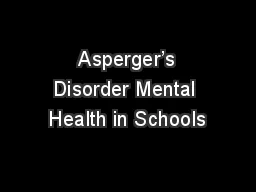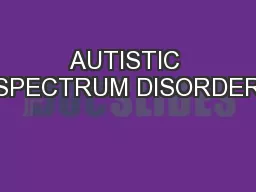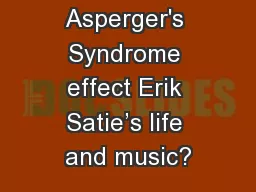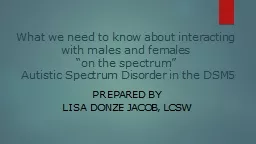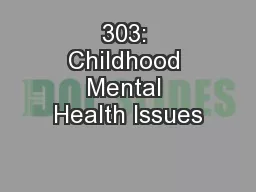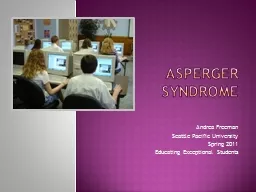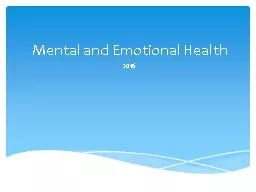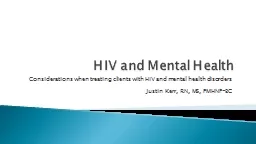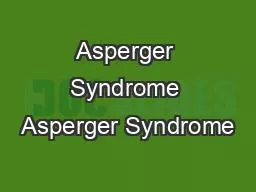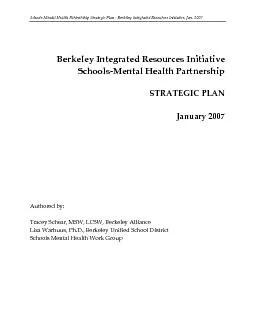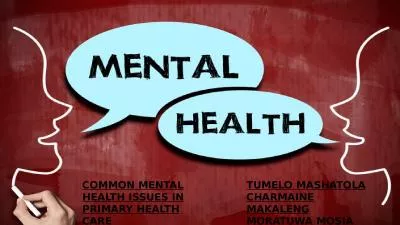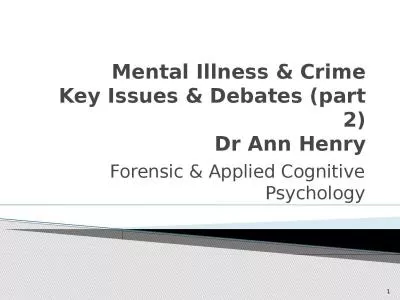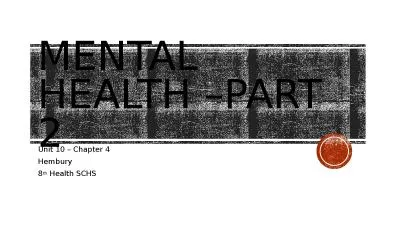PPT-Asperger’s Disorder Mental Health in Schools
Author : karlyn-bohler | Published Date : 2020-04-03
Professor Dr Hughey Created by Julia Garten Children with autism are challenged by the most essential human behaviors They have difficulty interacting with other
Presentation Embed Code
Download Presentation
Download Presentation The PPT/PDF document " Asperger’s Disorder Mental Health in ..." is the property of its rightful owner. Permission is granted to download and print the materials on this website for personal, non-commercial use only, and to display it on your personal computer provided you do not modify the materials and that you retain all copyright notices contained in the materials. By downloading content from our website, you accept the terms of this agreement.
Asperger’s Disorder Mental Health in Schools: Transcript
Download Rules Of Document
" Asperger’s Disorder Mental Health in Schools"The content belongs to its owner. You may download and print it for personal use, without modification, and keep all copyright notices. By downloading, you agree to these terms.
Related Documents

